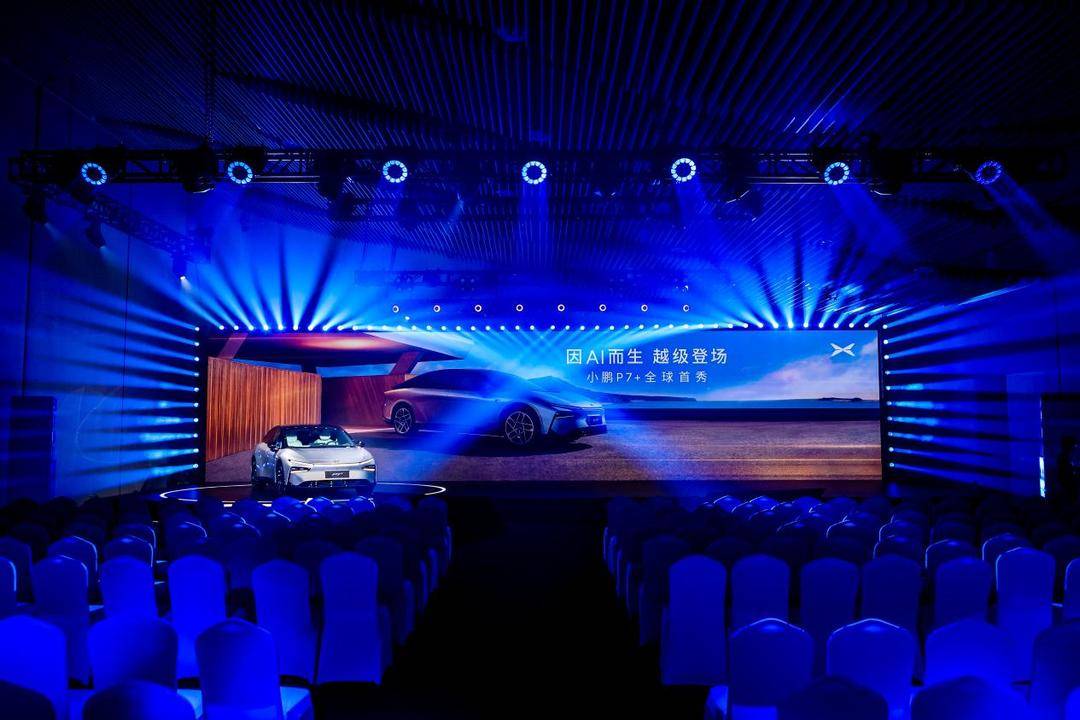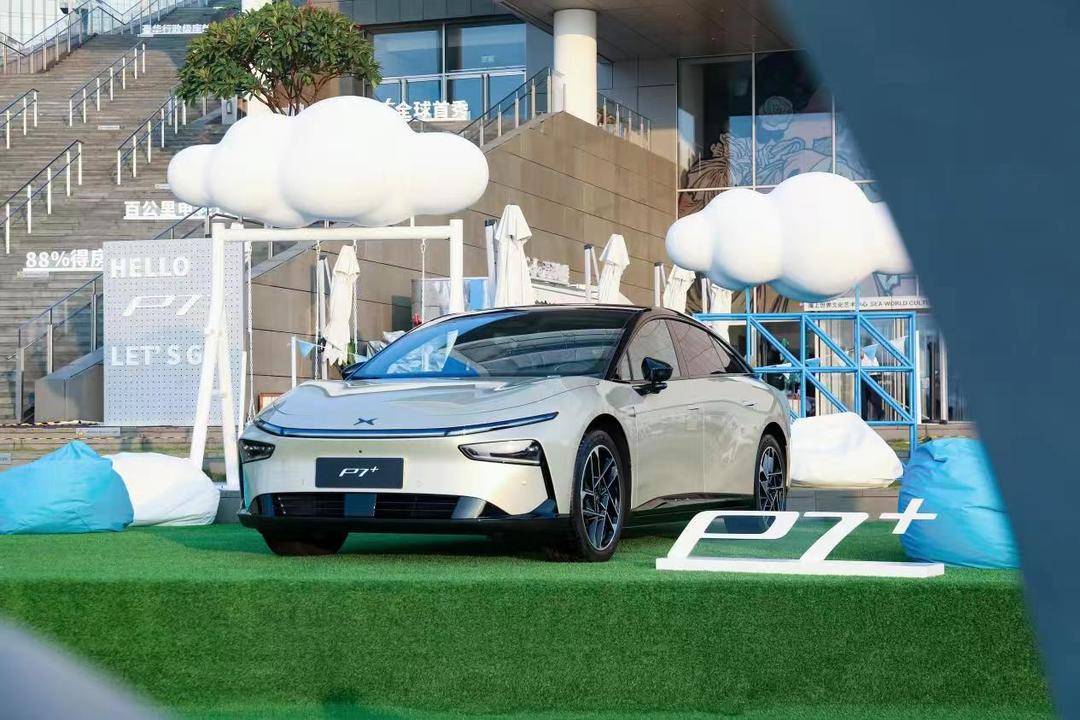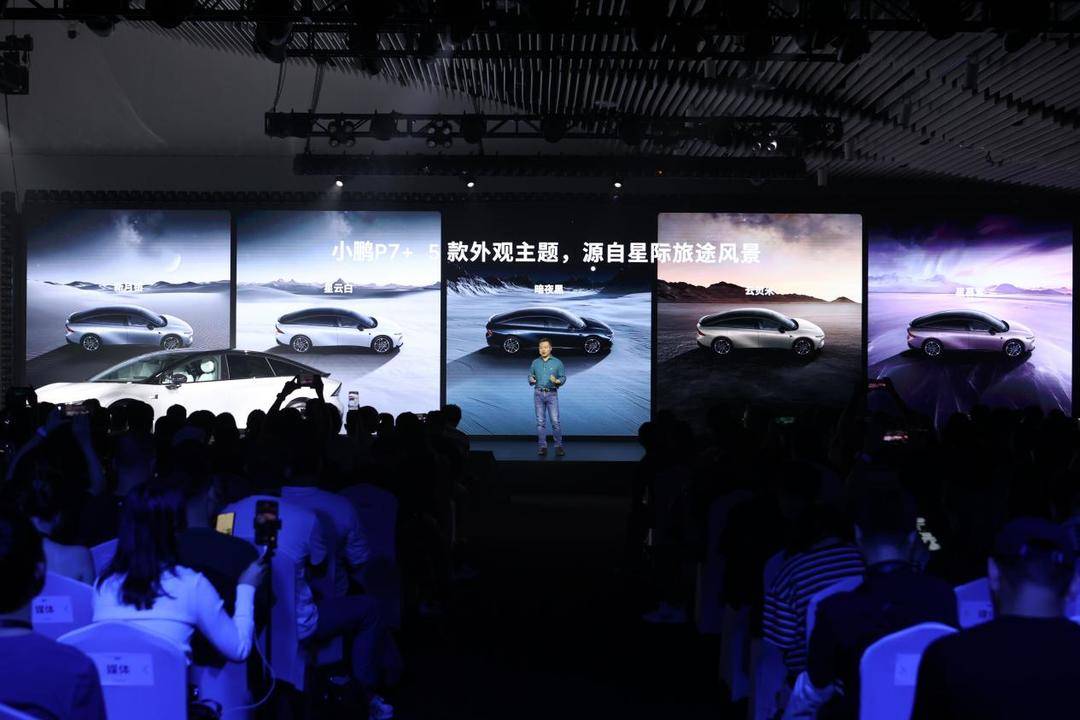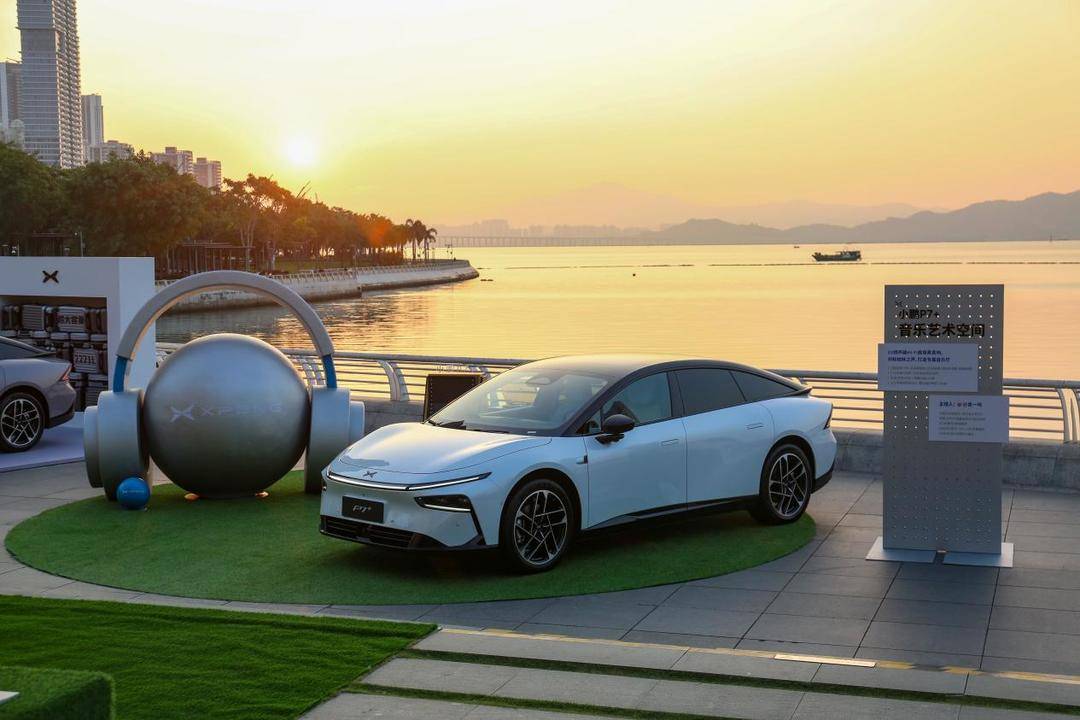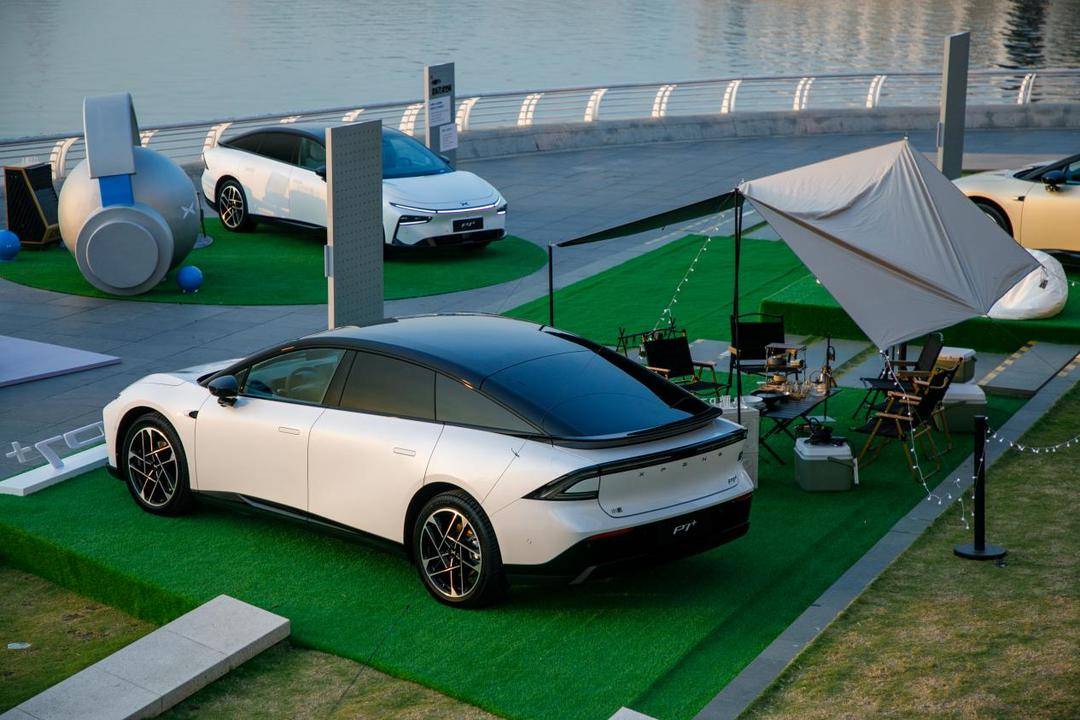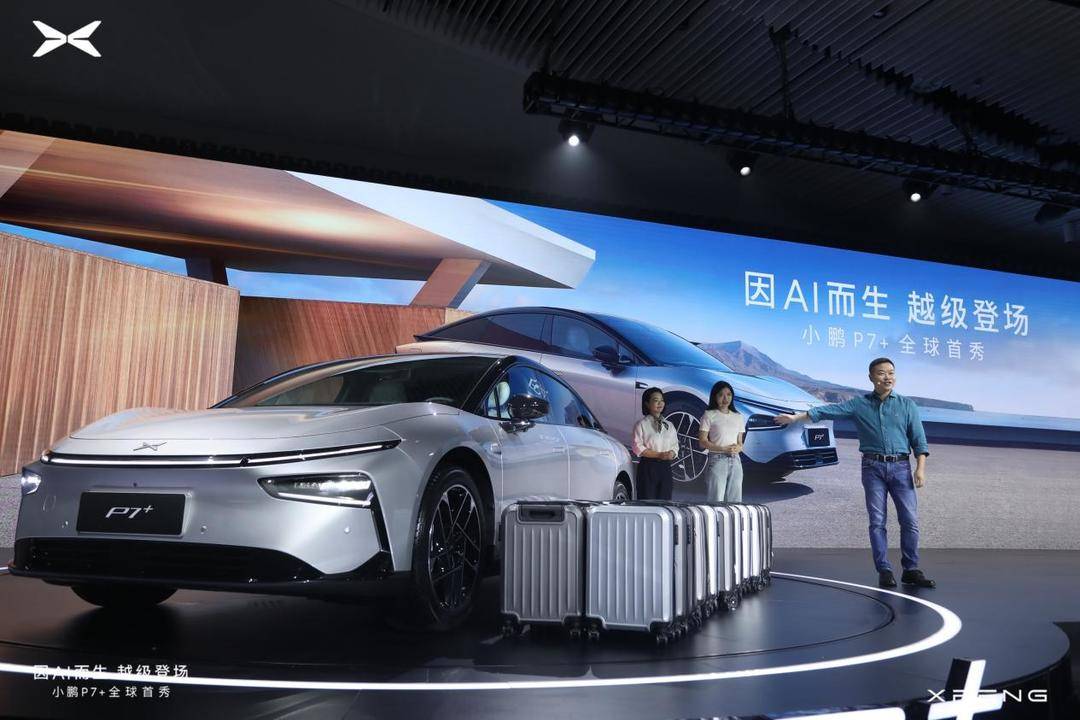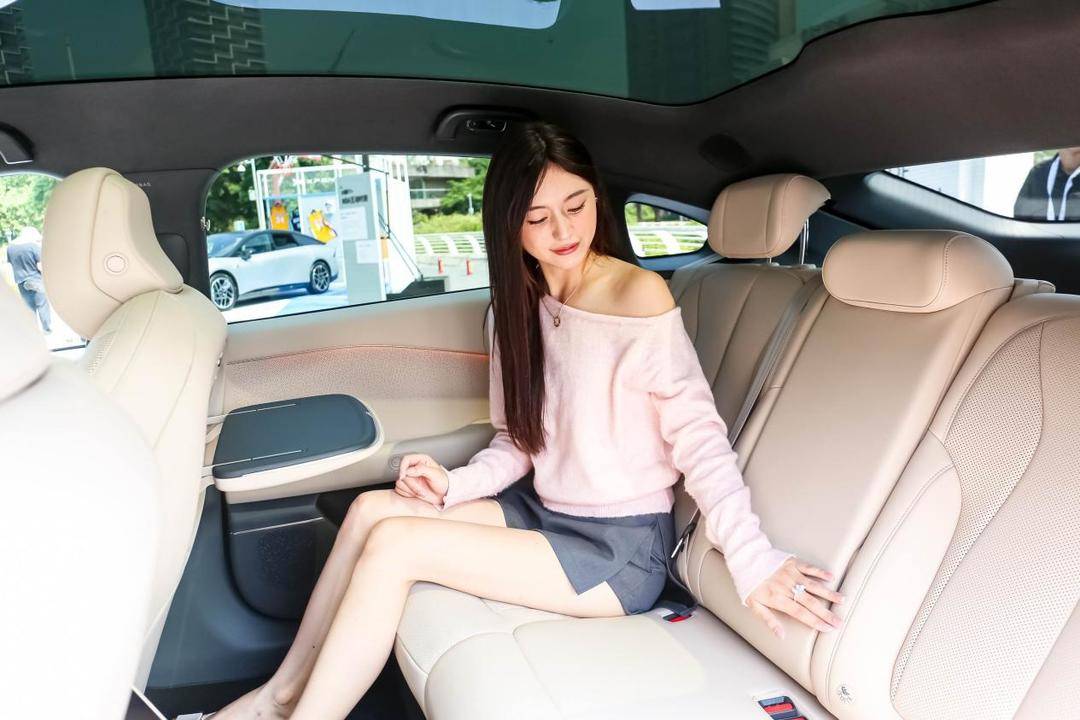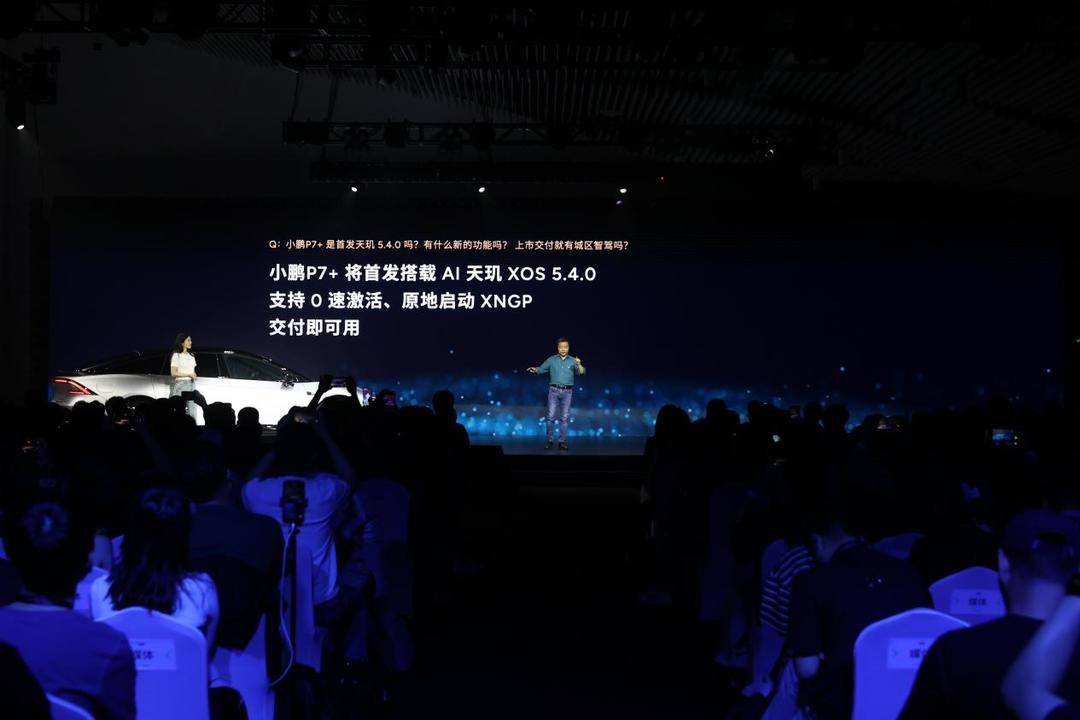On October 10, Xpeng Motors launched the world’s first AI car, the Xpeng P7+, in Shenzhen. This car merges technology and art. It uses an end-to-end large model to provide users with an upgraded smart travel experience. Xpeng Motors Chairman and CEO He Xiaopeng stated that the Xpeng P7+ has two main missions. First, it aims to give more ordinary people a taste of luxury space and comfort. Second, it seeks to allow more fuel car users to enjoy advanced intelligent electric driving.
The future holds challenges. The XPeng P7+ marks a milestone for XPeng Motors. It represents the beginning of an end-to-end four-part series. It carries two main missions. It will usher in a new era of AI cars.
Future tech aesthetics lead the trend in intelligent pure electric design. Xpeng Motors understands users’ focus on high aesthetics. The design of the Xpeng P7+ draws inspiration from future tech aesthetics. It follows a design philosophy rooted in the beauty of the universe. This approach elevates overall visual appeal. The “Interstellar Shuttle” design theme combines AI aesthetics with the flying car X2 style. It creates a more elegant and tech-savvy hatchback shape. For color options, the Xpeng P7+ offers five choices: Crescent Silver, Nebula White, Night Black, Twilight Purple, and Cloud Beige. Each color showcases a sense of technology and quality.
The front design of the Xpeng P7+ features the Robot face family design. Designers drew inspiration from robots in sci-fi movies. The design continues Xpeng’s style. When the headlights light up, they create a softer visual effect. The dynamic curved shape blends power and aesthetics. It creates full and smooth lines on the car’s side. The fluid side has no protrusions, which effectively reduces wind resistance. The overall drag coefficient is only 0.206Cd. From every angle, the lines of the Xpeng P7+ reflect compactness, sportiness, and strength.
The roof features a floating design. The dual-layer rear wing enhances the sporty coupe look. The unique design allows the Xiaopeng P7+ to achieve the impossible triangle of electric coupes: high aesthetics, low drag, and ample space.
The Xiaopeng P7+ offers the most space among coupes under 300,000 yuan (42450$). It combines luxury and comfort. This model is often called the SUV version of a coupe. The P7+ measures 5056mm in length and has a wheelbase of 3000mm. Its unique design achieves an impressive 88% space utilization rate. To maximize interior height, the P7+ features the thinnest 800V battery pack in the industry, measuring just 109mm thick. The integration of the CTB body and battery technology further optimizes the chassis height, allowing for a vertical interior height of up to 973mm, the best in its class.
The Xiaopeng P7+ offers nearly 1 meter of space in both the front and rear seats. This spaciousness rivals that of luxury executive sedans. The rear knee room measures an impressive 157mm, accommodating even tall individuals comfortably. Passengers can easily cross their legs in both rows. In the rear, you can add a play mat, transforming the space into a children’s play area. Thanks to its hatchback design, the P7+ features a trunk with dimensions of 1 meter in length, width, and height. In standard configuration, the trunk holds 725L. With the rear seats folded down, capacity expands to 2221L. This not only facilitates luggage loading but also provides SUV-like cargo capability. With the rear seats down, it can fit 32 carry-on suitcases. This performance exceeds that of some luxury midsize SUVs by 30%, earning it the title of “space monster” from the media.
The spacious interior of the Xiaopeng P7+ offers comfort. Its design uses the “Cloud Space” language. This approach provides warmth and ease, making users feel at home. The Xiaopeng P7+ features unique all-functional cloud comfort seats. It has an 8-layer design. This includes 20mm zero-pressure memory foam and a 120mm firm support foam layer. It caters to the physique of Chinese users, creating a larger contact area. In terms of seat comfort, the Xiaopeng P7+ surpasses luxury executive sedans. Both front and rear seats support massage, heating, and ventilation. It also offers six intelligent massage scenarios, delivering an unprecedented relaxation experience. Additionally, the rear seats have a 10° stepless electric adjustment. The backrest can recline up to 37°, ensuring a comfortable experience during long trips. The Xiaopeng P7+ includes all comfort features as standard. It believes that full standardization represents what a 300,000-level electric sedan should be.
Flagship AI technology redefines the relationship between people and cars. The Xiaopeng P7+ launches with the new generation AI Eagle Eye vision system. Its intelligent driving level reaches Xiaopeng’s highest standard. The system features the AI Dimensity 5.4.0 version. It offers an AI driving experience without restrictions on road conditions or routes. Users can access it nationwide. The XNGP feature allows for activation from a complete stop. He Xiaopeng noted this function will be ready for use upon delivery.
To ensure reliable functionality, the AI Eagle Eye vision solution leads the industry as the first pure vision solution with a single pixel Lofic architecture. It adapts quickly to changes in various lighting conditions, such as bright and dark light replacements, strong backlight, and low light. Compared to traditional cameras, it collects information more accurately, clearly, and from greater distances. In terms of perception, the Xiaopeng P7+ achieves a perception range equivalent to 1.8 football fields. It clearly identifies irregular and unknown obstacles. With the support of AI end-to-end large models, it utilizes 100% of the information data collected by the cameras, outperforming traditional handwritten rules in smart driving.
The AI Tianji system is the first domestic car machine system powered by a large model. It aims to provide users with a fun and user-friendly smart cockpit experience. The Xiaopeng P7+ features the Qualcomm Snapdragon 8295 automotive-grade cockpit chip. It includes a 12.3-inch full LCD instrument panel, a 15.6-inch central control screen, and an 8-inch rear entertainment screen. This setup achieves a virtual cockpit with multi-screen interaction.
